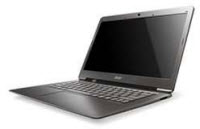Even at $699, Ultrabooks are still overpriced


When Intel first unveiled the Ultrabook concept back in 2011, the average price of the hardware was around $999. By this fall, the chip giant is hoping that the average price will have been slashed to a more manageable $699.
Is this enough to give the thin-and-light devices the boost they need?
During the second quarter earnings call with investors on Tuesday, Intel CEO Paul Otellini said: "We are very confident that we'll see $699 systems at retail this fall".
The problem with almost every discussion relating to Ultrabooks is that it eventually comes back to comparing these Windows-powered thin-and-light devices to Apple's MacBook Air. Yes, the MacBook Air is a thin-and-light device, and yes, it's made of cool brushed aluminum; but beyond that, there are not an awful lot of similarities between the two devices.
And this, in a nutshell, is the whole problem with Ultrabooks. Their entire existence is down to Apple's success with similar devices. The iPod didn't carve out a market for other MP3 players, and the success of the iPad was no proof that there was a mass market for tablets in general. History shows us that it's dangerous to assume that the popularity of thin-and-light notebooks with an Apple logo on the lid is proof of a wider market for similar devices powered by Windows.
Apple seems to operate in a market separate to that of the PC, but it seems that even the big PC players have still to grasp this fully.
So, let's put the MacBook Air aside and consider Ultrabooks as part of the wider PC ecosystem instead. How does that $699 price tag feel now?
Pretty high, that's how.
The problem with the PC industry is that price continues to be the main differentiator between different products. No matter what new device form factor is released -- the netbook is a good example -- eventually the OEMs realize that the only way to squeeze sales out of the new device is to start slashing prices. No matter how innovative the form factor, having many OEMs means that competition eventually degrades into a race to the bottom.
This race to the bottom has a pretty adverse effect on the sales dynamic. If people want a MacBook Air, there's only one maker to choose from, Apple, and each model has a set price. It's simple. With Ultrabooks, consumers know that they can shop around and find competitive prices. While this is good for the consumer, it's bad for the platform for a number of reasons.
First, it encourages OEMs to focus on price above everything else, and this leads to corner-cutting and a slide in quality. Secondly, and more important, it can put a brake on sales. If people want, say, a MacBook Air, they know that there's only one manufacturer to choose from and one price per model. It's simple. But with Ultrabooks there are a handful of OEMs to choose from, each with pricing structures that not even Nostradamus could figure out. This means that people delay making a purchase because they think that if they shop around they might get a better deal.
Then, it's easy for this temporary delay to become permanent as something else -- maybe a Mac -- catches their eye.
Don't give consumers a reason to delay buying, even for a day.
The other problem with that $699 price point is that there's a ton of cheaper cool shiny products that consumers -- home and business alike -- could be spending their money on.
While $699 buys one Ultrabook, it buys three and a half Kindle Fire or Nexus 7 tablets. That's a lot of hardware that you can buy for the price of one Ultrabook -- and remember that price is for a budget-end Ultrabook. Enterprise buyers will need extra convincing that they need to invest in Ultrabooks when cheaper notebooks -- or even netbooks -- will do exactly the same, only in a less stylish manner.
Image source: Intel.